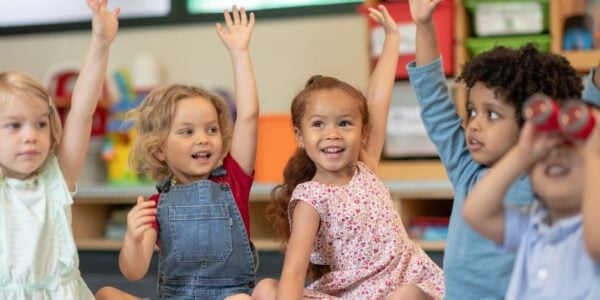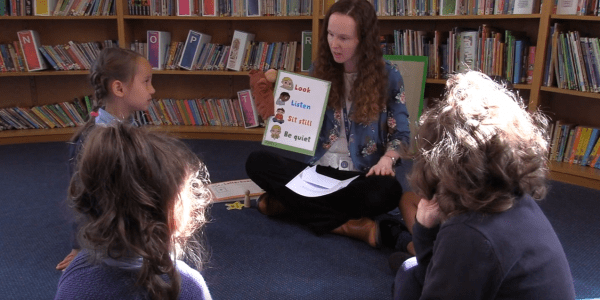
01/09/20
4 min read
Pupils are on average three months behind on their learning as a result of the COVID-19 crisis, with the most deprived pupils and those from BAME backgrounds most likely to be affected, according to new research from the National Foundation for Educational Research (NFER).
The report examines the significant impact of the COVID-19 pandemic on the learning of children and young people, and the challenges schools face in reopening to all pupils this month.
Jointly funded by Nuffield Foundation and NFER, the study is based on a weighted sample of almost 3,000 school leaders and teachers across over 2,200 mainstream primary and secondary schools in England. The report focuses on new data collected towards the end of the last academic year (July), showing the changing nature of the pandemic’s impact on pupils, teachers, schools and communities, and schools’ plans and concerns ahead of reopening to all year groups this month.
Teachers estimate that their pupils are three months behind in their learning:
Nearly all teachers (98%) report that their pupils are behind where they would normally expect them to be in their curriculum learning. Teachers estimate that their pupils are three months behind, on average, with 21% reporting that boys have fallen further behind normal expectations than girls.
In July, teachers had covered, on average, only 66% of the usual curriculum during the 2019/20 academic year. Based on teacher estimates, the learning gap between between disadvantaged pupils and their peers had increased by 46%. Teachers in the most deprived schools are over three times more likely to report that their pupils are four months or more behind in their learning compared to teachers in the least deprived schools (53% compared to 15%).
Pupil and parental engagement with remote learning remained low during July, alongside low attendance from pupils eligible for return:
During July – when the majority of pupils were expected to learn remotely – there remained low levels of parental and pupil engagement (38% of pupils returned their last piece of set work compared to 42% in May). Additionally, school leaders reported that only 56% of pupils eligible to return attended, with lower attendance among pupils eligible for the Pupil Premium (45%) and those from BAME backgrounds (49%). Almost one third (32%) of school leaders highlighted parental concerns over safety as a common reason for non-attendance. Leaders in schools with high proportions of pupils from BAME backgrounds were more likely to report parents having safety concerns than schools with no BAME pupils (65, compared to 35%). Providing parental reassurance will be important to ensure the full return of pupils to school this month.
The quality of in-school teaching was impacted by COVID-19, highlighting the challenges that schools, teachers and pupils will face as they open fully:
Almost three quarters of teachers (74%) did not feel able to teach to their usual standard under the regulations that were in force. In an open response questions, almost half said that distancing requirements had negatively impacted their teaching practices. This resulted in them no longer being able to utilise core elements of pedagogy (such as group work), nor did they feel able to move around the classroom to teach, support and interact with their pupils effectively. Over half of school leaders (51%) reported that they were using teaching assistants (TAs) to lead classes, as a way of managing smaller classes, and 46% of teachers said that they were mainly teaching pupils they did not usually teach. These challenges are expected to remain as schools reopen, as a result of social distancing requirements.
Almost half of pupils are in need of intensive catch-up support, with those from the most deprived schools and schools with highest proportions of pupils from BAME backgrounds in greatest need:
Teachers estimate that 44% of their pupils are in need of intensive catch-up support. Teachers’ estimates are 25 percentage points higher in the most deprived schools, compared to the least deprived (57 compared to 32%). They are also significantly higher (by 18 percentage points) in schools serving the highest proportion of pupils from BAME backgrounds, and this relationship persists after controlling for the effects of deprivation.
In July, almost 90% of school leaders predicted they will find it at least somewhat manageable to open to all pupils safely, although many identify the need for additional staffing and resources:
School leaders who have concerns about the manageability of opening their schools, say they need additional staffing and resources, including teachers, Teaching Assistants (TAs), support staff, cleaning and protective equipment, and IT. Some of the costs associated with these additional needs will be met by government schemes.
In case of further outbreaks of COVID-19 and local lockdowns, there needs to be enhanced plans for interactive remote learning and IT equipment for pupils and staff:
Evidence on effective distance learning highlights the importance of interactive learning, consolidating learning and supporting pupils to self-regulate as effective strategies (as part of a mixed diet of provision). However, by July, teachers were no more likely to be offering interactive teaching methods than earlier in lockdown.
Although many schools were supplying IT equipment to their staff, over one third of teachers (35%) were providing their own laptop or computer, and three-fifths either supplied their own camera/video equipment (41%) or had no access to this at all (21%). Additionally, leaders report that 28% of pupils have limited access to IT at home – a similar level to NFER research conducted in May.
The report outlines a series of recommendations, which includes: the need for increased parental reassurance; support for schools in managing non-attendance; additional resources for costs associated with managing the demands of COVID-19; the need for Ofsted to modify expectations for schools in upcoming inspections; and schools needing more government support to prepare for remote learning in a local lockdown.
Dr Angela Donkin, Chief Social Scientist at NFER, said: “Whilst it is crucial that children catch-up, we should not assume that teachers will immediately be able to deliver the same quality of teaching, at the same speed, as before the pandemic”,
“There remains a range of barriers for teachers and schools, which means catch-up should be seen as part of the ongoing process of learning recovery, for most pupils, rather than as a quick-turnaround solution.
Josh Hillman, Director of Education at Nuffield Foundation, added: “From September, schools will be trying to close the disadvantage gap while also balancing social distancing measures and delivering the curriculum for all pupils.
“Rather than being a quick-fix, school catch-up schemes will need to be sustained if they are to be effective, and we would welcome additional government guidance and funding for schools as they develop new ways of working.
“This long-term approach is particularly important given the ongoing impact of COVID-19 on students’ family circumstances, such as increased levels of job insecurity, poverty and relationship breakdowns, all of which could affect their learning and development and further widen the disadvantage gap.”

















































